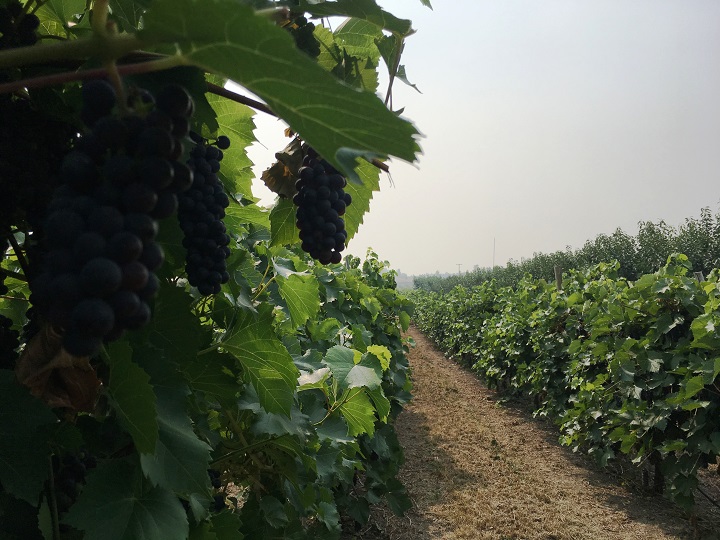A new university study says Okanagan Lake may be a contributing factor when it comes to greenhouse gases.

According to the study, the lake’s cool waters contain bicarbonates. When local crops are irrigated with that water, the bicarbonates dissolve and can become a “surprising new source of carbon dioxide (CO2) emissions.”
The study was released by UBC Okanagan on Thursday.
“We have been studying the carbon content of soil for some time,” said lead author and professor of biology Melanie Jones. “This large, natural carbon store is hugely important in combatting rising atmospheric CO2 levels and it’s essential to understand all the carbon transactions that take place in soil.”
“Critically, some of the CO2 that was removed from the atmosphere by plants can also be converted into soil organic matter by soil organisms, where it can remain in the soil for hundreds of years,” said Kirsten Hannam, an agroecologist with Agriculture and Agri-Food Canada and a co-author on the study.
“So major research efforts are underway to figure out how to increase soil organic matter content.”
The study says during photosynthesis, plants remove CO2 from the atmosphere and convert it into plant tissue, such as roots, leaves, fruit or bark. Jones says at the same time, the decomposition of dead plant tissue by soil organisms, including bacteria, fungi, earthworms, ants and others, produce CO2 and release it back into the atmosphere.
- Enter at your own risk: New home security camera aims paintballs at intruders
- High benzene levels detected near Ontario First Nation for weeks, residents report sickness
- Beijing orders Apple to pull WhatsApp, Threads from its China app store
- Boston Dynamics unveils ‘creepy’ new fully electric humanoid robot
The university said the study involved continuous measurement of air coming from soil respiration chambers in drip-irrigated apple orchard. This reportedly allowed for high-frequency monitoring of the soil surface and air. The tests were said to have been repeated with different water supplies, using irrigation water or de-ionized water, with the results being remarkably different.
“It turns out that some of the CO2 released after irrigation comes from the natural salts — bicarbonates — dissolved in water from Okanagan Lake as it is applied to the soil,” said Andrew Midwood of UBCO’s dept. of biology. “It’s a process we had not considered until we noticed some unusual results when we traced the source of the CO2.”
Midwood is quick to point out that understanding the processes that drive the release of CO2 from the soil is essential in combatting rising atmospheric greenhouse gases.
“This is a natural process,” said Hannam. “Our results have to be considered in a broader context. Irrigation is essential to fruit production in the Okanagan Valley.
“Along with causing the release of CO2, from bicarbonates in the water, irrigation is also promoting the removal of CO2 from the atmosphere by encouraging plant growth. It’s a balance and to understand the balance, you need to know all the component parts.”
The study can be found here.


Comments